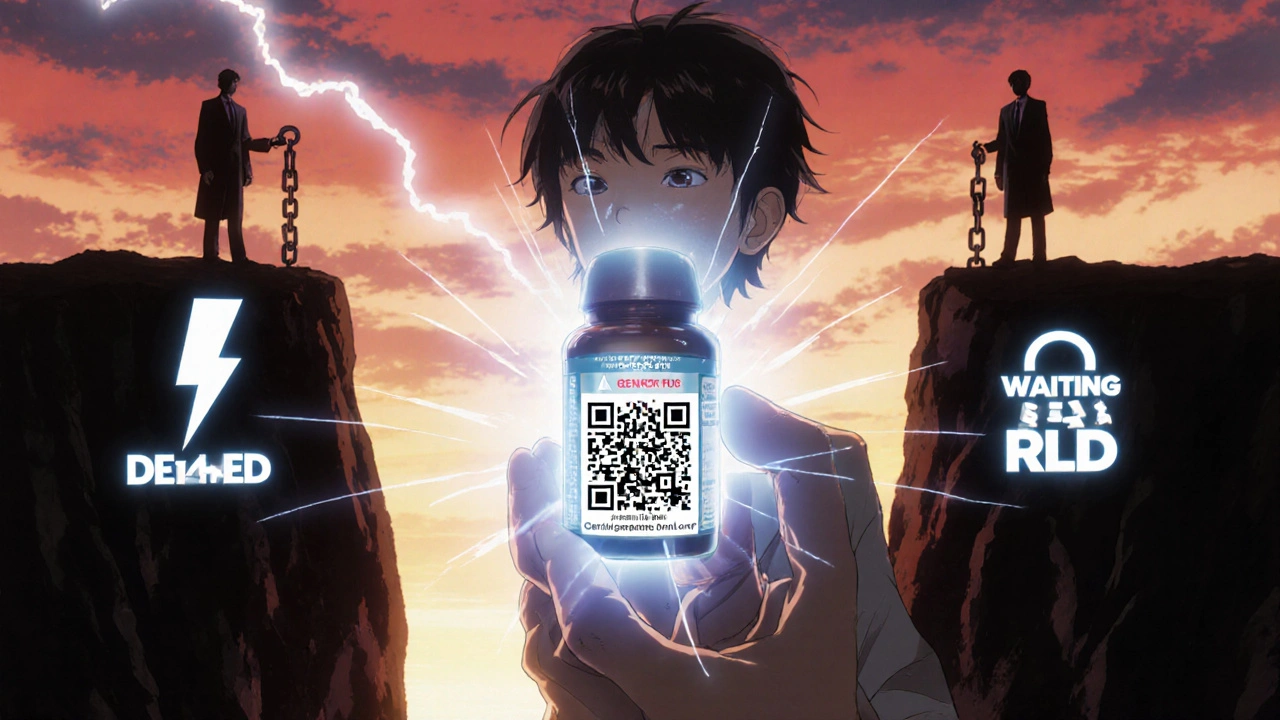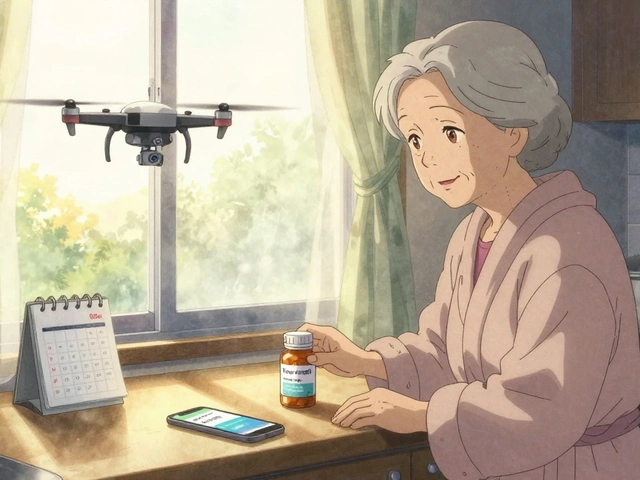When you pick up a generic pill at the pharmacy, you expect it to work just like the brand-name version. But what you don’t see-what’s printed on the tiny label inside the bottle-is tightly controlled by the FDA. And it’s not just about matching the active ingredient. The generic drug labeling must be identical to the brand-name drug’s, down to the wording of warnings, dosage instructions, and even how side effects are listed. This isn’t a suggestion. It’s the law.
Identical Labeling Is the Rule, Not the Exception
The FDA requires that every generic drug’s labeling match its Reference Listed Drug (RLD) exactly. That means if the brand-name version says, “May cause dizziness,” the generic must say the same thing. No rewording. No simplifying. No adding extra notes. This rule comes from Section 505(j)(2)(A)(v) of the Federal Food, Drug, and Cosmetic Act and is spelled out in 21 CFR 314.94(a)(8). The goal? Consistency. If a doctor prescribes a drug based on the brand’s label, the generic must give the same information-no surprises.
There are only three places where differences are allowed:
- The manufacturer’s name and address
- The National Drug Code (NDC) number
- Minor formatting changes needed for printing or packaging
Everything else-from boxed warnings to contraindications to clinical pharmacology sections-must be word-for-word identical. This includes the structure. Since 2006, all prescription drug labels must follow the Physician Labeling Rule (PLR), which organizes information into 24 standardized sections. Generic manufacturers must adopt the PLR format as soon as the RLD does. If the brand updates its label to include a new warning in the “Warnings and Precautions” section, the generic must follow within the FDA’s required timeline.
How Generic Manufacturers Track Label Changes
Keeping up isn’t easy. There are over 2,850 Reference Listed Drugs in the FDA’s Drugs@FDA database, and new label updates are posted every Tuesday. Generic manufacturers can’t afford to miss one. A single outdated warning could mean a patient gets hurt-and the company gets a warning letter from the FDA.
Leading companies assign 3 to 5 full-time regulatory staff per 50 approved products just to monitor these changes. Most rely on FDA’s electronic alerts, which send emails when labeling updates occur for specific drug classes. According to an FDA survey, 82% of manufacturers use this system as their primary tool. But even that’s not foolproof. A 2024 FDA audit found that 17% of RLD entries in the Orange Book had temporary mismatches with Drugs@FDA during transitions. That means manufacturers often have to cross-check three sources: the Orange Book, Drugs@FDA, and direct FDA notifications.
And it’s not just about frequency-it’s about speed. When the FDA approves a labeling change for the RLD, generic manufacturers must update their labels “at the earliest time possible.” But how fast is that? It depends on the type of supplement submitted:
- Prior Approval Supplement (PAS): Takes 10 months to review. Used for major changes.
- Changes Being Effected (CBE): Can be implemented after 30 days. Used for safety-related updates.
- CBE-30: Can be implemented immediately, but must notify the FDA within 30 days.
Here’s the catch: unlike brand-name manufacturers, generic companies can’t file a CBE on their own. They must wait for the RLD to change first. That’s where the biggest problem lies.
The Safety Gap in Generic Drug Labeling
Brand-name drugmakers can update their labels independently when new safety data emerges. They file a CBE and start using the new label while the FDA reviews it. Generic manufacturers can’t. They’re stuck waiting-for weeks, sometimes months-for the brand to act, then for the FDA to approve the update, then for them to re-print their labels.
A 2024 study in JAMA Internal Medicine found this delay affects 9,400 generic drugs-89% of all prescriptions filled in the U.S. On average, critical safety updates are delayed by 6 to 12 months. In 2022, when valsartan was recalled due to contamination, generic manufacturers couldn’t update their labels to warn patients until months after the brand did. Patients kept taking the drug, unaware of the risk.
Dr. Robert Temple, former FDA deputy director, called this “an unacceptable safety gap” for the 6 billion generic prescriptions filled each year. Dr. Janet Woodcock, former FDA deputy commissioner, echoed this in a Senate hearing, saying the MODERN Labeling Act gave the FDA the tools to fix this-but implementation is slow. About 1,200 RLDs have been discontinued, leaving 3,500 generic products without an official reference to update from. The FDA’s January 2025 draft guidance tries to fix this, but it’s still in review.

What Happens If You Don’t Comply?
The FDA doesn’t take labeling errors lightly. In fiscal year 2024, labeling issues were the cause of 37% of all complete response letters-meaning the FDA rejected the generic drug application because the label didn’t match. Between January 2023 and December 2024, the agency issued 47 warning letters specifically for labeling discrepancies. These aren’t fines. They’re legal notices that can halt production, trigger recalls, or even lead to injunctions.
One small manufacturer told the FDA’s Industry Labeling Listserv that they missed a labeling update because their tracking system didn’t flag a change in the “Use in Specific Populations” section. The FDA found out during an inspection. The company lost six weeks of production. The cost? Over $200,000 in lost revenue and rework.
What’s Changing in 2025 and Beyond
The FDA is pushing hard to modernize. In Q3 2025, it plans to launch the Next Generation Generic Drug Labeling System-a digital platform using AI to automatically detect changes in RLD labels and notify generic manufacturers in real time. Beta testing starts April 15, 2025, with 15 major players like Teva, Viatris, and Sandoz.
Also new: electronic labeling requirements. Medication guides must now include a direct link-via QR code or URL-to the current FDA-approved label in PDF format. The link must use HTTPS and go straight to the document on Drugs@FDA. No redirects. No landing pages. Just the label.
And it’s getting more expensive. Labeling compliance now makes up 18-22% of total ANDA maintenance costs. Small manufacturers spend an average of $147,500 per product per year just to keep labels current. Large companies with scale spend about $89,200. Industry analysts predict generic drugmakers will invest $2.8 billion in labeling tech by 2029.

Why This Matters to You
If you’re a patient, you should know: your generic pill’s label might not reflect the latest safety info. Always check [email protected] if you’re concerned about a drug’s warning. If you’re a pharmacist, ask your suppliers about their labeling update process. If you’re in the industry, don’t assume the Orange Book is enough. Cross-check with Drugs@FDA. Set up alerts. Assign staff. This isn’t paperwork-it’s patient safety.
The system was designed to ensure consistency. But consistency without timeliness is dangerous. The FDA knows this. The industry knows this. And patients are paying the price.
Can generic drug labels be different from brand-name labels?
No, generic drug labels must be identical to the brand-name Reference Listed Drug (RLD) in all content, including warnings, dosage instructions, and side effects. The only permitted differences are the manufacturer’s name, address, and National Drug Code (NDC) number. Minor formatting changes for packaging are also allowed, but wording cannot be altered.
How often do generic drug labels need to be updated?
Generic manufacturers must update their labels as soon as the FDA approves a change to the RLD’s label. Timelines vary based on the type of supplement: Prior Approval Supplements take up to 10 months, CBE supplements allow changes after 30 days, and CBE-30 allows immediate implementation with 30-day notification. However, generic companies can’t initiate updates-they must wait for the brand to act first.
What is the Physician Labeling Rule (PLR)?
The Physician Labeling Rule (PLR), implemented in 2006, requires all prescription drug labels to follow a standardized format with 24 sections, including Highlights of Prescribing Information, Recent Major Changes, Indications and Usage, Dosage and Administration, Contraindications, Warnings, and Clinical Pharmacology. Generic drugs must adopt the PLR format when the RLD does.
Can generic manufacturers add new safety warnings on their own?
No. Unlike brand-name manufacturers, who can file a "Changes Being Effected" (CBE) supplement to update safety information before FDA approval, generic manufacturers must wait for the Reference Listed Drug (RLD) to update first. Only then can they submit a matching update. This creates a dangerous delay in communicating new risks.
What happens if a generic drug label is outdated?
Outdated labels can lead to FDA warning letters, product recalls, or even legal action. In 2024, labeling issues caused 37% of all complete response letters for generic drug applications. Between 2023 and 2024, the FDA issued 47 warning letters specifically for labeling discrepancies. Failure to update can halt production and damage a company’s reputation.
How do generic manufacturers track labeling changes?
Most use FDA’s electronic notifications through CDER, which send email alerts for labeling updates. They also cross-check [email protected], the Orange Book, and sometimes third-party databases. Leading companies assign 3-5 full-time regulatory staff per 50 approved products to ensure no change is missed. A 2024 FDA audit found 17% of RLD entries had temporary inconsistencies, so multiple sources are critical.
Is electronic labeling required for generic drugs?
Yes. As of 2025, medication guides for generic drugs must include a direct, secure link (HTTPS) to the current FDA-approved label in PDF format, either via QR code or URL. The link must point directly to the document on [email protected] landing pages or redirects are allowed.
What to Do Next
If you’re a patient: Always check the latest label on [email protected] if you’re unsure about a drug’s risks. Don’t assume your pharmacy’s label is current.
If you’re a pharmacist or clinician: Ask your generic drug suppliers how often they update labels. Push for transparency. If you see outdated information, report it to the FDA’s MedWatch program.
If you work in generic drug manufacturing: Set up automated alerts. Don’t rely on one source. Assign dedicated staff. Audit your labeling process quarterly. The cost of compliance is high-but the cost of a mistake is higher.
The system isn’t broken-it’s outdated. And the people who need the most protection-patients taking generic drugs-are the ones most at risk because of it.







Holli Yancey
November 17, 2025 AT 09:49